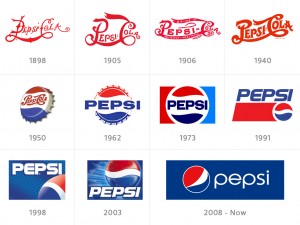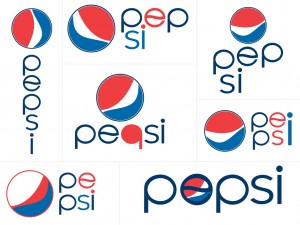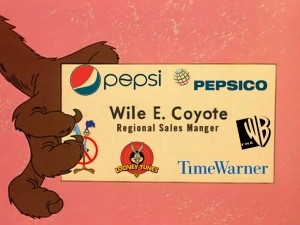Why are we such sticklers about the Brooklyn College logo, and how it is used?
The short answer is that the logo is our public face. It’s a way of quickly identifying who we are that transcends just a simple design, a set of images or letters, often in set colors. When used consistently, a logo creates a strong, immediate, and universal association—and that becomes increasingly important in the highly competitive arena of higher education, where colleges and universities are competing for resources, students, and attention.
This is why our office requires the campus to follow logo guidelines. To understand more, let’s see what happens when a famous logo runs amuck.
Take Pepsi-Cola. The logo has undergone major changes only twice in its 118-year history. From 1898 to 1949, the logo was a stylish cursive that the owner thought would make the beverage seem classy. In 1950, a big change was made when “Cola” was dropped and “Pepsi” was encircled in the colors of the American flag to market it as the all-American drink. A more moderate change was made in 1991, when the typeface evolved into a modern, round style, and the circle became its own element, incorporating a swish that makes it appear peppy and on the move.
Everyone in the company and everything that’s connected to it—from business cards to refrigerator magnets—has the same design that is recognized globally as Pepsi.
But what happens when an employee begins to fiddle?
Or change the color?
What if Pepsi’s accounting office thinks it needs a logo of its own—and has a staff member with design software who likes a creative challenge?
And then there’s sales manager Wile E. Coyote, who belongs to several organizations and wants to consolidate all their logos on his business card so everyone will know everything about him.
The moral of this story is when you don’t follow our logo guidelines, at least two important things happen: you dilute both the college’s public image and your own identification with the college community you are proud to be a part of. And that’s why we’re such sticklers about





